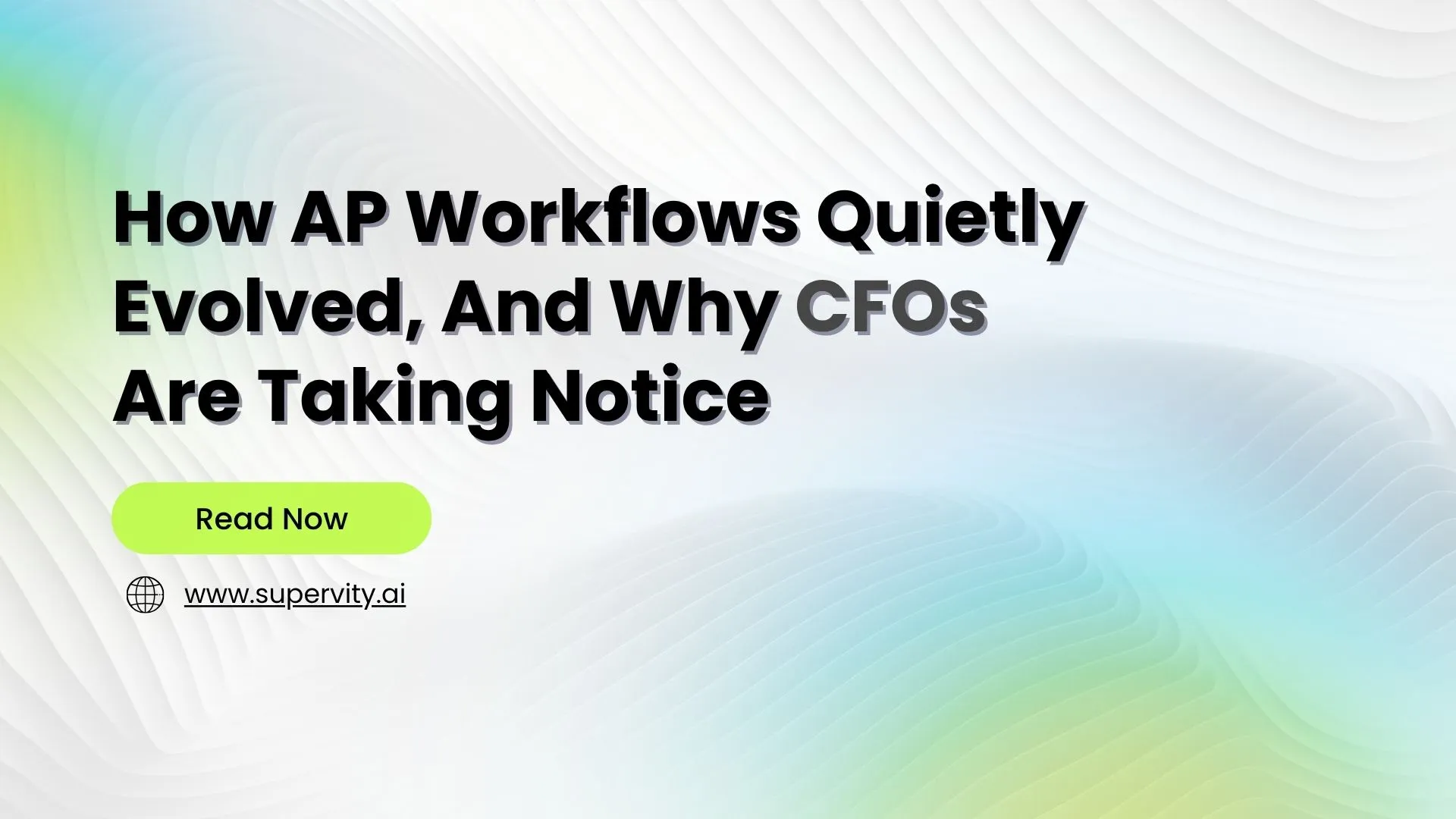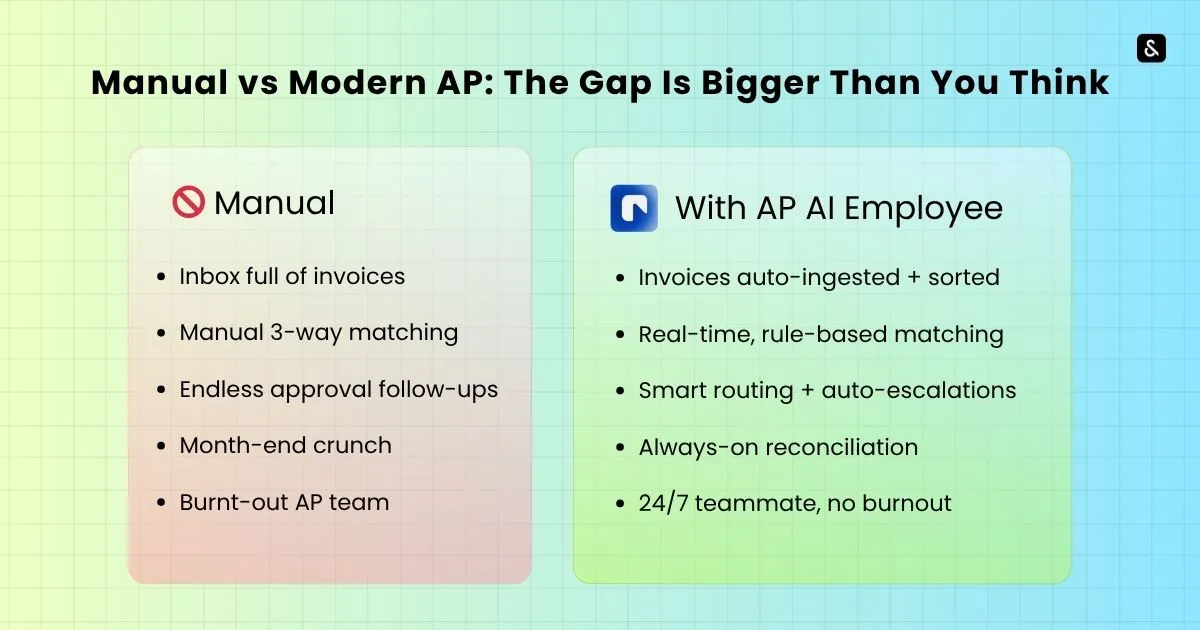
For a long time, Accounts Payable was almost invisible, and often overlooked. It was just “the department that pays the bills,” operating quietly in the background while other parts of finance drove strategy.
But behind that quiet exterior, something else was going on.
CFOs are now realizing that AP workflows have fundamentally evolved, and those who adapt early are seeing measurable improvements in accuracy, efficiency, and decision-making speed.
Let’s unpack what’s changing, why it matters, and how some CFOs are getting ahead.
Even a well-run traditional AP process often looked like this:
Despite all the workflow tools, OCR add-ons, and RPA scripts, AP teams were still “working around” inefficiencies rather than eliminating them.
Modern finance leaders are deploying AI Employees that don’t just automate a task but orchestrate entire AP workflows.

This is a shift from "tools that assist" to digital teammates that operate AP workflows autonomously.
Read More:
What distinguishes this evolution is that AI Employees for AP don’t require CFOs to replace their existing ERP or finance stack.
.webp)
Supervity’s AI Accounts Payable Specialist is:
This means finance teams can adopt orchestration-level efficiency without major replatforming - a key reason why CFOs are taking notice.
If your AP workflows still feel pieced together, OCR here, RPA there, a manual reconciliation at the end - you’re not alone.
But you may also be missing what leading CFOs are quietly realizing:
The future-ready AP function isn’t built on more tools; it’s built on AI Employees who do the work end-to-end - faster, smarter, and predictably
🔗 Book a demo to see how this can work inside your existing finance op